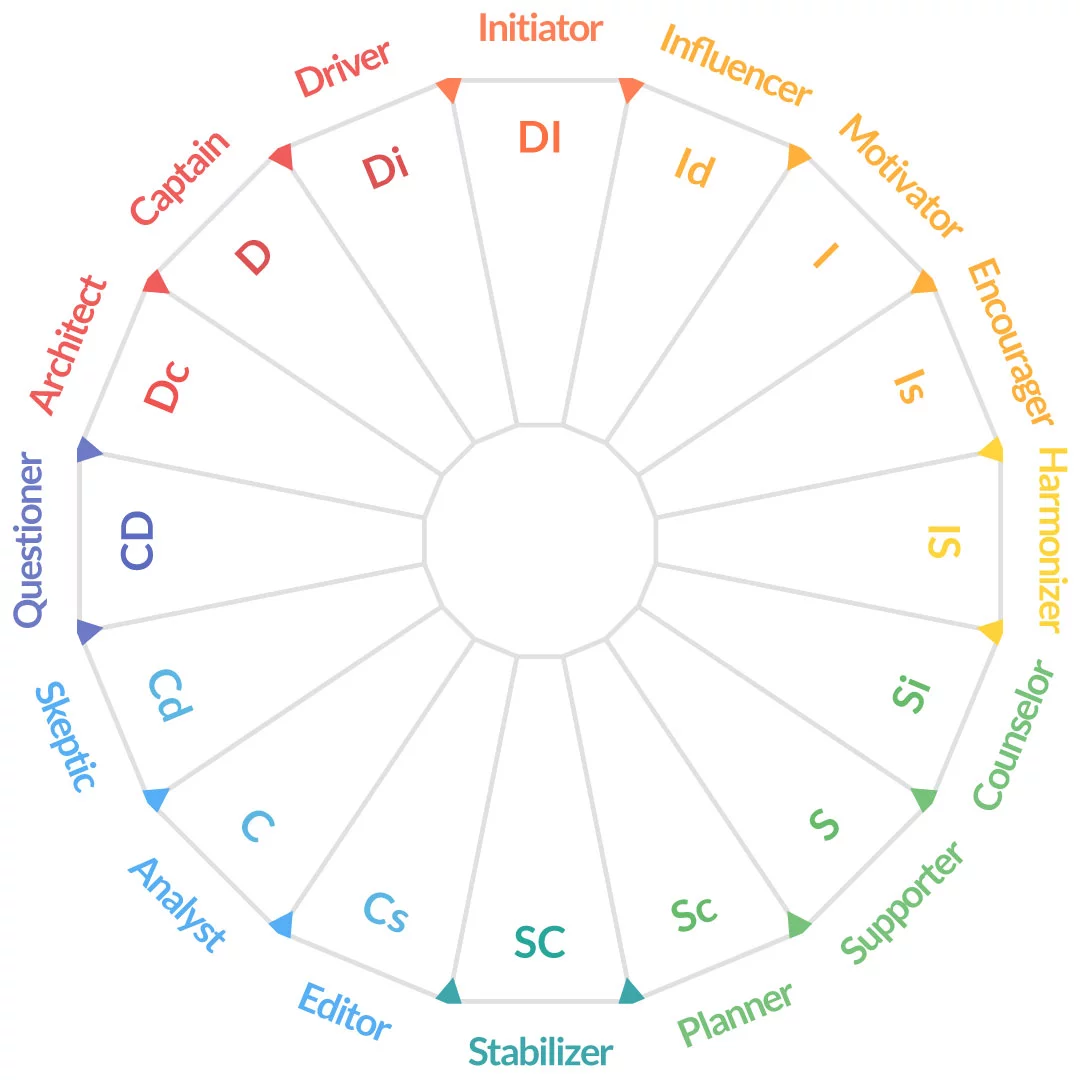
How to tailor cold emails for maximum impact
When you’re writing a cold outreach email, your task may seem simple -- but it can actually be very difficult. Response rates are low, and decision makers’ inboxes are flooded with canned, generic sales emails from hundreds of other people trying to get their attention.
It may seem like a hopeless endeavor, but you can actually use the market’s overall disregard for personalization to your advantage - not only with what you say, but how you say it.
At Crystal, we call it personality tailoring, and it’s a proven way to help you:
- Get the attention of a new prospect that you’ve never met.
- Earn their trust and build rapport.
- Increase your chances of a response.
In this guide, we’ll go over the basics of personality tailoring and give you a base of knowledge to start personalizing emails and getting incrementally better results with each tweak. This isn’t a silver bullet, but a new mindset for writing emails. Once you view people through the lens of their personality, rather than some assumptions about their job title or other general attributes, you’ll start creating your own mental models and systems to improve as you go.
How different personality types like to interact via email
The Crystal Personality Map (which is rooted in DISC) can tell us the basics about each personality type’s email preferences:

Northwest (D style)
Personalities that fall in the northwestern area of the personality map want email to be brief, to-the-point, and as efficient as possible.
Northeast (I style)
Northeastern personalities want email to be casual, expressive, and relational.
Southeast (S style)
Southeastern personalities want email to be warm, trustworthy, and friendly.
Southwest (C style)
Southwestern personalities want email to be detailed, informative, and accurate.
Composing An Email That Will Resonate With Your Prospects
1. Writing the greeting
While it may seem like a trivial personal preference, your opening is one of the easiest but most impactful parts of your email to tailor.
Northwest (D style)
Use only the recipient’s name (like “Chris,”), without any “Hi” or “Hello.” It’s a subtle hint that you value their time and are not interested in fluff.
Northeast (I style)
Use a casual greeting like “Hey Chris,” or even “Hey Chris!”. The more relational, the better.
Southeast (S style)
Use a formal, standard greeting like “Hi Chris,” - it’s best that you stay friendly, but formal.
Southwest (C style)
For southwestern personalities, there isn’t a strong trend for the greeting, but you’re likely to succeed with the same strategy as the northwestern personalities (“Chris,”).
2. Writing the introduction
Different personality types have vastly different preferences for how you begin your message body. This often one of the biggest “shifts” for people to make away from their natural style when tailoring an email.
Northwest (D style)
Get right into the value you can provide, skipping any kind of personal introduction. Examples:
- I noticed that you recently released a new product, and my company can help you get significantly more exposure in the consulting industry.
- We offer a service that can cut legal costs for small and mid-sized business by 25-50%.
- We help our clients find great deals on office space in Boston.
Northeast (I style)
Help them connect the dots - it may be mutual connections, interests, or anything else that may link you together.
- I asked Melissa Taylor who would be the best person to talk to, and she said to reach out to you!
- I’m a fellow UCLA grad (class of ‘09) and I ended up in Chicago at Hello Media.
- I noticed that we’re both part of the AAISP, and I would love to share a little bit about what my company is working on to see if it could help you.
Southeast (S style)
Introduce yourself formally, so they know information like who you are, where you work, and/or where you are.
- My name is Daniel and I work for MetaZine, which is a software platform for online magazine publishers like yourself.
- I’m Stacey and I work for a Phoenix-based agency called Milo & Marley. We work with small businesses in the area like Happy Plumbing, Beet City, and The Beach Club.
Southwest (C style)
Specify precisely why you are contacting them before you get into any further detail.
- I’m writing to find out if we can help you reduce your legal expenses.
- I’m contacting you to invite you to our fundraising event this November.
- I’d like to introduce myself and find out more about your marketing strategy to see if we can work together.
3. Writing the body
In general, personalities in the north prefer shorter emails and those in the south prefer longer ones. However, there are a number of additional nuances to consider...
Northwest (D style)
You only have a little bit of time to keep their attention, so stick to the highest level of detail, use concise language, and keep the email to 3 sentences or less.
Northeast (I style)
Your email should be the first step in the conversation, with the goal of building a friendly relationship. Use casual language, express a little bit of emotion, and ask open questions.
Southeast (S style)
Your main goal should be to build trust, so include past experience, appeals to authority, and any other external references that can increase your credibility.
Southwest (C style)
You want to immediately meet their skepticism with data to prove your point. Back up any claim you make with external sources.
4. Driving an action
Every outreach email you write should have a specific call to action - the thing you want your prospect to do in response. However, as you can imagine by now, the different personality types have a range of preferences for responding to a cold email...
Northwest (D style)
Ask for permission to take an action, rather than requesting that they give you some of their time.
Examples:
- Can I send over some instructions for signing up and getting 10 free credits?
- Would you mind if I sent some informational materials to your team?
- Can I give you a call tomorrow morning to discuss?
Northeast (I style)
Suggest a real-world activity without pressure to make a decision (i.e. take it out of the email).
Examples:
- I’d love to chat with you and answer any questions you have about the product. Let me know what your next week looks like.
- I’m going to be in Dallas next week and I would love to introduce myself if you have a few free minutes.
Southeast (S style)
Get them to take a baby step towards your desired outcome, but keep it in the email and don’t ask for too much.
Examples:
- Are you interested in new partnerships like this? If so, let’s talk next week.
- What would be the best way to get on your calendar in the near future?
- Take a look through this information and see if anything sticks out. I’m here if you have questions!
Southwest (C style)
Ask them to answer a question (particularly an interesting or challenging question) via email, as they are much more likely to respond in writing than over the phone.
- What’s one thing you would change about your current QA process?
- What are the most important traits you’re looking for in candidates for this position?
- What are your biggest marketing challenges right now?
5. Closing out your email
Your email closing doesn’t matter as much as the opening, but it’s an area to potentially slip up - people often have strong preferences and pet peeves for how others close their emails.
Northwest (D style)
Don’t even bother with a formal closing - just end with your name.
Northeast (I style)
End with a genuine expression of gratefulness or excitement.
Examples:
- Thanks!
- Looking forward to speaking,
- Keep doing great work,
Southeast (S style)
End formally and with sincerity.
Examples:
- Thank you,
- Warm regards,
- Best,
Southwest (C style)
End with the same strategy as the northeast or southwest, depending on your personal preference. Avoid too much emotional expression.
Examples:
- Thanks,
- Thank you,
- Best,
How Can I Tell My Prospect’s Personality...Before We’ve Met?
Use Crystal over LinkedIn to gather insights about your prospect’s personality, including what communication style is most likely to resonate, before you send the first email. Get 10 free monthly credits by signing up here.








